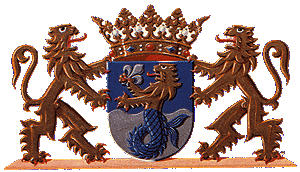
The portal for Flevoland.

 History of the Dutch Province of Flevoland. On 27 June 1985, Parliament passed an act whereby the Province of Flevoland was to be created on 1 January 1986. This act was published in the 360th edition of the Staatsblad (Bulletin of Acts and Decrees) and confirmed in its 361th edition.
This act marked the official beginning of the Province of Flevoland as the Netherlands newest and twelfth province. But this region has a much longer history. As early as the 17th century, the hydraulic engineers were studying the Zuiderzee (Dutch for Southern Sea) with great interest. At that time, Wieringen, Marken, Schokland and Urk were islands situated in the Zuiderzee.
It wasn't until the 19th century that plans of this nature became technically and financially feasible.
A government agency called the Zuiderzee Project Department was established on 1 May 1919. The Northeast Polder was the first polder to be reclaimed from this new lake. The location of the dike was decided on. On 3 October 1939, the mayors of the villages of Urk and Lemsterland could shake hands upon completion of a major stretch of dike. As a result, the famous fishing island of Urk was no longer a real island. This was a highly emotional moment for the local population. In World War II, work on the Zuiderzee Project slowed down. But by 1940, the dike had reached the province of Overijssel, and in September the land had been drained. Thousands of workers were deployed to make it suitable for agriculture. During the war, the Dutch authorities used a great number of people to cultivate the polder land, thereby ensuring that this workforce could not be used in the Nazi war industry. After the war, the IJsselmeer Polders Department began distributing the land, and the first residential areas were built. The town of Emmeloord (part of the municipality of Northeast Polder) was the first to profit from the experience gained in the Wieringermeer Polder. Early on, the new Northeast Polder was part of the Province of Overijssel.
After the creation of the Northeast Polder, work on the Eastern Flevoland Polder began. While the Northeast Polder was reserved chiefly for agriculture, Eastern Flevoland was to offer living space for the Municipalities came into being, and the three IJsselmeer polders Northeast Polder, Eastern Flevoland, Southern Flevoland developed into a single administrative unit, which finally resulted in the new province. (The first polder, the Wieringermeer Polder, had been incorporated into the Province of North Holland, while the fifth polder, the Markerwaard, has yet to materialise.) The Northeast Polder and Urk, which had been temporarily allocated to the Province of Overijssel, are now once again part of Flevoland. The Northeast Polder is not only a polder, but also the largest municipality in this province, in terms of size. Source : Province of Flevoland. |